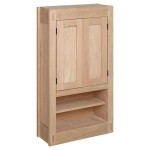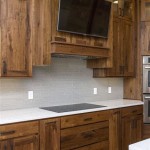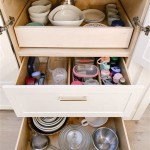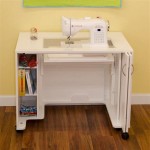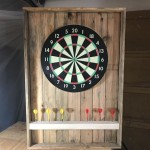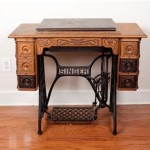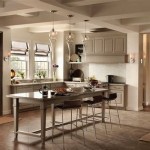How To Install Sliding Drawers In Kitchen Cabinets
Kitchen cabinets, while providing essential storage, can often be inefficient, particularly in deeper base cabinets. Reaching items at the back can be a challenge, leading to wasted space and frustration. Installing sliding drawers, also known as pull-out shelves or roll-out trays, offers a practical solution, significantly improving accessibility and organization within existing kitchen cabinets. This article provides a comprehensive guide on how to install sliding drawers in kitchen cabinets, covering preparation, installation, and troubleshooting.
Preparing for the Installation
Prior to beginning the installation process, careful preparation is crucial. This involves assessing the existing cabinets, selecting appropriate hardware, and gathering the necessary tools. A thorough preparation phase ensures a smooth and successful installation.
Cabinet Assessment: The initial step involves a detailed assessment of the kitchen cabinets where the sliding drawers will be installed. Measure the interior width, depth, and height of the cabinet opening. It is imperative to measure accurately, as these dimensions will determine the size of the sliding drawers and the appropriate length of the drawer slides. Check for any obstructions inside the cabinet, such as pipes, electrical wiring, or protruding hardware. These obstructions may require adjustments to the placement or design of the sliding drawers. Note the type of cabinet construction (framed or frameless) as this will influence the installation method. With framed cabinets, the frame must be considered when determining the drawer width. Frameless cabinets offer more flexibility in terms of drawer size.
Hardware Selection: Selecting the correct hardware is essential for the functionality and longevity of the sliding drawers. Drawer slides are available in various lengths and weight capacities. Choose slides that can support the intended load of the drawer contents. Ball-bearing slides offer smoother operation and higher weight capacities compared to roller slides. Undermount slides provide a cleaner look as they are concealed beneath the drawer box. Consider soft-close mechanisms for added convenience and to prevent slamming. The drawer box itself can be constructed from various materials, including plywood, solid wood, or melamine. Plywood is a common choice due to its stability and affordability. Ensure the drawer box dimensions are appropriately sized for the cabinet opening, accounting for the thickness of the slides and any necessary clearances. Select drawer fronts that complement the existing cabinet design and hardware.
Tool and Material Gathering: A well-equipped workspace is essential for efficient and accurate installation. Gather the following tools and materials: measuring tape, pencil, level, drill, drill bits (including pilot drill bits and potentially a countersink bit), screwdriver (both Phillips head and flathead), safety glasses, work gloves, wood screws (appropriate length and gauge for the drawer slides and cabinet material), wood glue (optional, for drawer box assembly), sandpaper (for smoothing edges), a saw (for cutting drawer box components if necessary), and a square (for ensuring accurate drawer box assembly). Having all necessary tools and materials readily available will prevent interruptions during the installation process.
Installing the Drawer Slides
The correct installation of the drawer slides is critical for the smooth and reliable operation of the sliding drawers. Precise measurements and careful alignment are essential for optimal performance.
Marking Slide Positions: After determining the desired height for the sliding drawers within the cabinet, use a measuring tape and pencil to mark the positions for the drawer slides. Use a level to ensure the marks are perfectly horizontal. Incorrectly aligned slides will cause the drawer to bind or not function smoothly. The height of the drawers should ideally maximize the use of space while leaving adequate clearance for items stored within. Consider the contents to be stored when determining the optimum spacing between drawers. For framed cabinets, the slides will typically be mounted to the cabinet frame. For frameless cabinets, the slides can be mounted directly to the cabinet sides, or filler strips can be added to provide a more substantial mounting surface. Accurate marking is essential to ensure proper alignment and functionality.
Attaching the Cabinet Slides: Once the slide positions are marked, attach the cabinet slides to the interior of the cabinet. Use the appropriate size wood screws to securely fasten the slides. Predrilling pilot holes is highly recommended to prevent the wood from splitting, especially when working with hardwood cabinets. Ensure the slides are flush with the marked lines and that they are aligned horizontally. If using filler strips (for frameless cabinets), attach them securely to the cabinet sides before attaching the slides. Double-check the alignment of the slides with a level after attaching them to ensure they are perfectly horizontal. Use a screwdriver to tighten the screws, but avoid over-tightening, as this could damage the cabinet or the slides.
Attaching the Drawer Slides to the Drawer Box: Similarly, attach the corresponding drawer slides to the sides of the drawer box. Align the slides carefully with the bottom edge of the drawer box, ensuring they are parallel to each other. Use wood screws to securely fasten the slides to the drawer box. Predrilling pilot holes is again recommended. Ensure the slides are positioned correctly to allow the drawer to slide smoothly into the cabinet. Use a square to ensure the slides are perpendicular to the drawer front. Check the alignment of the slides with a level after attaching them. Tighten the screws securely, but avoid over-tightening. The drawer slides must be meticulously attached to the drawer box as the precision of this task significantly impacts the overall functionality.
Installing and Adjusting the Drawers
With the slides correctly installed, the final step involves installing the drawers and making any necessary adjustments to ensure smooth operation and proper alignment.
Installing the Drawer Boxes: Carefully slide the drawer boxes into the cabinet, aligning the drawer slides with the cabinet slides. Gently push the drawer box until the slides fully engage. Check that the drawer slides smoothly in and out of the cabinet. If the drawer binds or sticks, inspect the alignment of the slides and make necessary adjustments. Small shims can be used to correct minor misalignments. Ensure the drawer sits flush with the cabinet frame (for framed cabinets) or the face of the cabinet (for frameless cabinets). The smoothness of the drawer operation should be checked repeatedly to ensure that each drawer slides without impediment.
Adjusting Drawer Alignment: After installing the drawers, it is often necessary to make minor adjustments to ensure proper alignment and smooth operation. Some drawer slides have adjustment screws that allow for fine-tuning of the drawer's position. Use these screws to adjust the drawer's height, depth, and side-to-side alignment. If the drawer is not level, shims can be used to correct the tilt. Ensure the drawer closes completely and sits flush with the cabinet frame or face. Continuously check and readjust until the drawer alignment looks visually correct.
Adding Drawer Fronts: Once the drawers are properly aligned, attach the drawer fronts. Position the drawer fronts carefully, ensuring they are centered and aligned with the other cabinet doors and drawers. Use screws to securely fasten the drawer fronts to the drawer boxes. Check the alignment of the drawer fronts after attaching them and make any necessary adjustments. Consider using temporary clamps to hold the drawer fronts in place while attaching them. Ensure the screws are not too long, as they could protrude through the front of the drawer front. Pilot holes might be required depending on the material of the drawer front. The drawer fronts are the visible part of the drawer so ensure that they are aligned with the style and existing doors and drawers of the kitchen.
Troubleshooting Common Issues
Even with careful preparation and installation, some common issues may arise. Understanding how to troubleshoot these issues can save time and frustration.
Drawer Binding or Sticking: If the drawer binds or sticks, the most likely cause is misaligned drawer slides. Check the alignment of the slides with a level and square, and make any necessary adjustments. Ensure the slides are securely fastened to both the cabinet and the drawer box. Another potential cause is obstructions within the cabinet, such as pipes or wiring. Remove any obstructions or adjust the drawer's position to avoid them. A build-up of sawdust or debris can also cause drawers to bind. Clean the slides and drawer tracks to remove any debris. If drawer fronts are rubbing against the cabinet frame, they might require slight trimming or sanding.
Drawer Not Closing Properly: If the drawer does not close completely, the issue could be related to the drawer slides or the drawer box itself. Check that the slides are fully engaged and that there are no obstructions preventing the drawer from closing. Ensure the drawer box is square and that it is not warped or damaged. If the drawer is sitting too high or too low, adjust the height of the slides or use shims to correct the position. Soft-close mechanisms may also require adjustment to ensure proper closing. Ensure that internal components of the drawer aren't obstructing the backward movement of the drawer.
Drawer Slides Detaching: If the drawer slides are detaching from the cabinet or the drawer box, the screws may be too short or the wood may be stripped. Use longer screws or consider using wood glue in addition to screws for a more secure hold. Predrilling pilot holes is essential to prevent wood splitting. If the wood is stripped, consider using wood filler to repair the holes before re-installing the screws. Over-tightening the screws can strip the wood. Ensuring that the drawer weight is within the tolerance of the drawer slides is very important.
By following these steps and addressing any potential issues, one can successfully install sliding drawers in kitchen cabinets, significantly improving the functionality and organization of the kitchen space. Careful planning, precise execution, and attention to detail are essential for achieving optimal results.

How To Install Cabinet Drawers With Ball Bearing Slides Houseful Of Handmade

How To Install Drawer Slides The Easy Way

My 9 Best Tips For Installing Cabinet Drawers Remodelando La Casa

How To Install Cabinet Drawers With Ball Bearing Slides Houseful Of Handmade

How To Build Kitchen Cabinets Install Drawer Slides
:strip_icc()/102326027-c240150e2d95420a85bc45f473f98644.jpg?strip=all)
How To Install Soft Close Drawer Slides

How To Install Drawer Pullouts In Kitchen Cabinets Ers

How To Easily Add Drawers Kitchen Cabinets Small Stuff Counts

My 9 Best Tips For Installing Cabinet Drawers Remodelando La Casa

Diy Pull Out Cabinet Drawers Love Renovations
Related Posts

